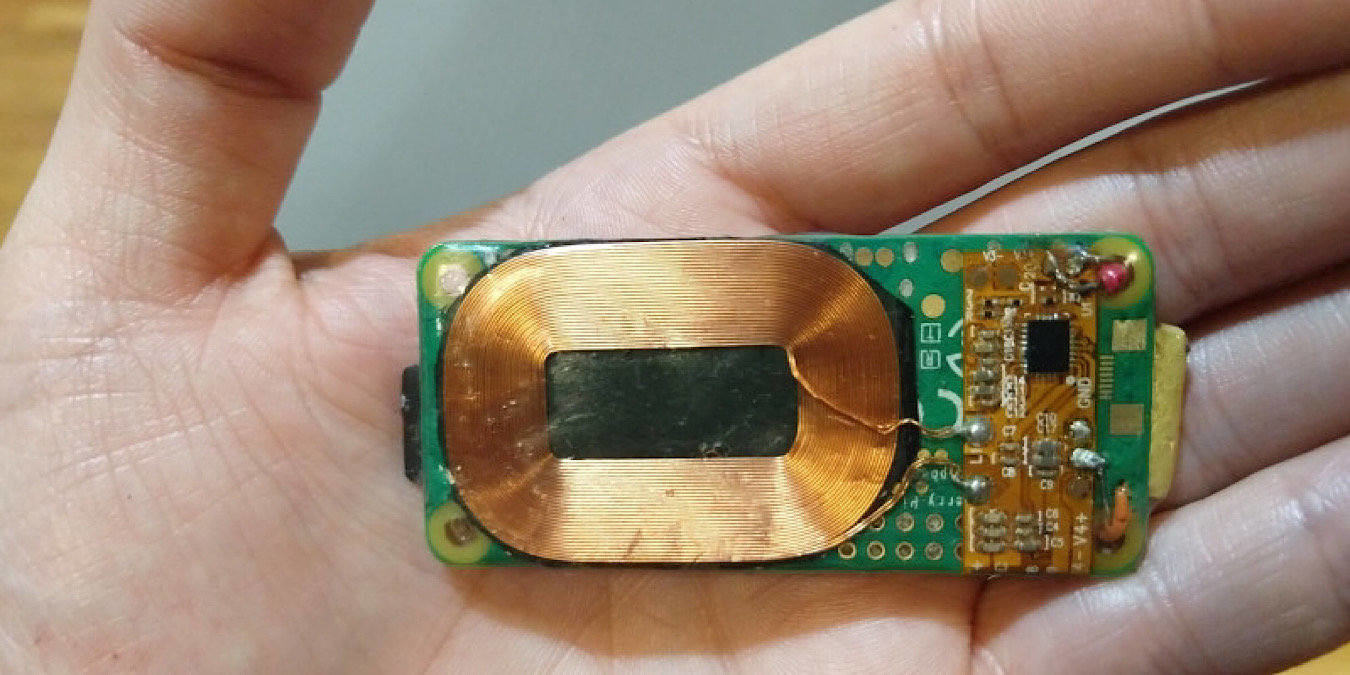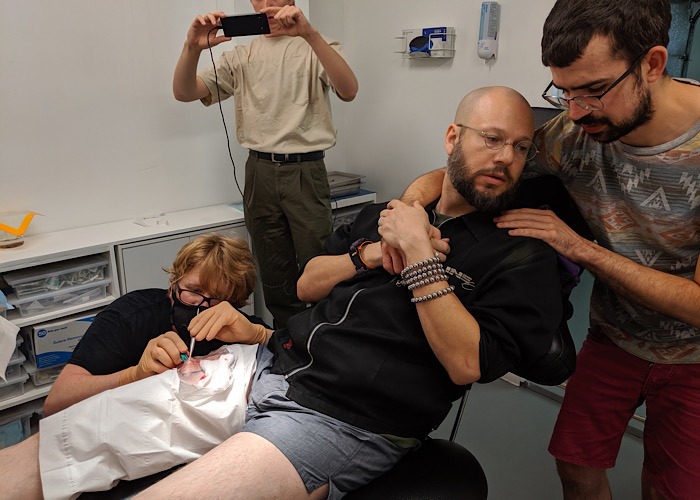
This was probably just a matter of time, right? We do so many things with the Internet of things – just about anything can be made into an IoT device, so why not a person? Why not turn a person into an IoT device?
A group of biohackers have installed Raspberry Pis under the skin in their legs. The PegLeg (you have to appreciate the name here) project is actually so far along it’s already v2.
PegLeg Implants
You have to admit it’s interesting, though scary, as this wasn’t done by a surgeon. One of the PegLeg group is a nurse, and he did the implantations.
The PegLeg project came about during a biohacker conference where it was proposed, and the PegLegs group decided to follow up on that idea.
Lepht Anonym was the recipient of PegLeg v1 that consisted of mainboard around the size of an Altoid tin that had a recycled plastic case, a repurposed battery, a Qi wireless coil to power the device from outside the body, and the smallest 64GB USB stick added.

Cass, the nurse, has a lab and surgery room in his home in California. He developed a biocompatible resin to be used on the device and put the idea through rigorous testing before the PegLegs were even developed.
v2 moved on to using a Raspberry Pi Zero with a Qi receiver, capacitor, Wi-Fi dongle, and half a terabyte of storage. While v1 was inserted in Lepht’s arm, two v2s were inserted in the upper thigh in the area where a Qi battery pack would be sitting in a pants pocket. Cass installed one device in his own leg and the other in Mixæl Laufer’s leg.
The PegLegs run a distro of PirateBox allowing end-users with a Wi-Fi device to connect and find an anonymous chat room, file service, and a video of the installation surgery. It does not require Internet access but does rely on mesh networking to connect users.
The Future of the PegLeg Devices
Nick Titus, who was in charge of optimizing the hardware and minimizing failure points, feels implanting a PegLeg is “a form of expression more than a logistical necessity.” He recommends anyone making this a DIY project avoid batteries and noted understanding the entire system is vital.
There are plans for v3, with the goal of making it the same width and length as a postage stamp but thicker. Also planned is research into wireless charging through metallic skin decals and other hardware. They do not plan to monetize it but do accept donations, and the recipe can be found on their site, while they are looking for developers as well.
Would you ever consider having a Raspberry Pi implanted under your skin? How do you think this affects the future of IoT as a whole. Drop your comments below and let us know what you think of PegLeg.
Image Credit: Brian McEvoy with Hackaday
Get the best of IoT Tech Trends delivered right to your inbox!







